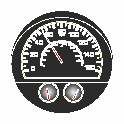What caused the ‘car bubble’?
Published 5:00 am Friday, April 17, 2009

- As GM’s losses accelerate, bankruptcy looks inevitable
The sea of new cars, 57,000 of them, stretches for acres along the Port of Baltimore. They are imports just in from foreign shores and exports waiting to ship out — Chryslers and Subarus, Fords and Hyundais, Mercedes and Kias. But the customers who once bought them by the millions have largely vanished, and so the cars continue to pile up, so many that some are now stored at nearby Baltimore-Washington International Marshall Airport.
The backlog exists because many of the factors that contributed to the collapse of the housing bubble — cheap credit, easy financing, excessive production, consumers buying more than they could afford — undermined another vital American industry.
“There was a car bubble,” Steven Rattner, who President Barack Obama recruited to head a Treasury Department group charged with finding solutions to the mountain of problems facing the American auto industry, said in an interview last month. “We had this artificially high sales rate.”
During the boom years of the early- and mid-2000s, automakers were selling more than 16 million cars a year in the United States.
They are on pace to sell fewer than 10 million this year. General Motors posted a 44.5 percent drop in March compared with the same month a year ago. Ford’s sales tumbled 41.3 percent. Chrysler’s fell 39.3 percent. Toyota’s sales fell 39 percent, and Honda’s dropped 36.3 percent.
What drove sales so high in the first place?
In short, the same confluence of confidence and easy cash that fueled the housing boom.
“Consumers felt good about their future,” said Mark Pregmon, a SunTrust Bank executive and chairman of the automotive finance committee of the Consumer Bankers Association. “It was riding the wave of the ‘go’ economy. Stocks were rising. Equity in houses was rising. People felt they could just borrow off their house.”
Car companies did their part to entice consumers.
In turn, Americans bought more cars and bought them more frequently. They spent more money than they could afford. And the automakers kept churning out cars to meet the very demand they had helped create.
“You keep doing what you’re doing, and you just keep assuming that growth is going to go on forever. And then at some point it just drops out from under you,” said Alan Pisarski, a transportation expert and author of “Commuting in America.” He compared the years of overproduction to putting a Burger King on every street corner. “The world just can’t use that many hamburgers,” he said.
The result has been an increase in the repossession rate for autos, he said, as well as higher delinquency rates on car loans and fewer people venturing onto the nation’s car lots.
“The uncertainty in the economy is causing consumers to postpone making big ticket purchases,” said Jesse Toprak, an analyst with Edmunds.com. “Cars are the second-most expensive purchase a consumer can make after their homes. We are seeing consumers holding on to cars longer than in the past. The average used to be 4½ years, and now is probably going to go over six years.”






